Field Horsetail
Poisonous to horses when consumed.
- Horsetail (Equisetaceae family):
- Equisetum arvense L.
- EPPO code:
- EQUAR
- Other names:
- Horse-pipes, joint grass, mare’s tail
Species information
- Lifecycle:
- Perennial.
- Propagation:
- Field horsetail reproduces by spores, and most commonly, by rhizomes.
- Emergence:
- The spore-producing reproductive shoots of field horsetail emerge first, typically in early May. The green vegetative shoots emerge shortly after.
- Habitat:
- Field horsetail is found throughout Ontario. It is very common in poorly drained soil but can be found in well drained gravely or sandy soils.
- Toxicity:
- Field horsetail contains thiaminase, an enzyme that will cause thiamine deficiency in horses. The side effects include weakness, a rapid pulse and muscular exhaustion (Kingsbury, 1964). This weed is rarely lethal to cattle (Kinsbury, 1964), most likely because thiamine can be produced in the rumen.
- Competitiveness:
- Very little data exists on crop yield loss from field horsetail competition. When field horsetail at a density of 1.6 million shoots/acre was left uncontrolled all season, corn silage yields in Quebec were reduced by 95%. In contrast, an Ontario study concluded that field horsetail is not a serious competitor with corn. When left uncontrolled, corn grain yields were only reduced once (by 13%) in four experiments. However, the study provided no information as to the density of field horsetail in each of the experiments, and one can assume that yield loss relationships are density-dependent.
Identification clues
- Reproductive shoots:
- The reproductive shoots of field horsetail are light brown to gray, unbranched and hollow stemmed with a spore-producing cone on top.
- Vegetative shoots:
- The first leaves of field horsetail are circular, flat and rounded with wavy margins. Its second leaf is similar, but with toothed margins.
- Roots:
- Creeping, horizontal rhizome
Often mistaken for
I know it's not Scouring rush because field horsetail is much shorter with many green branches and resembles a pine tree. Scouring rush, on the other hand, is taller, lacks branches and resembles a green bamboo pole.
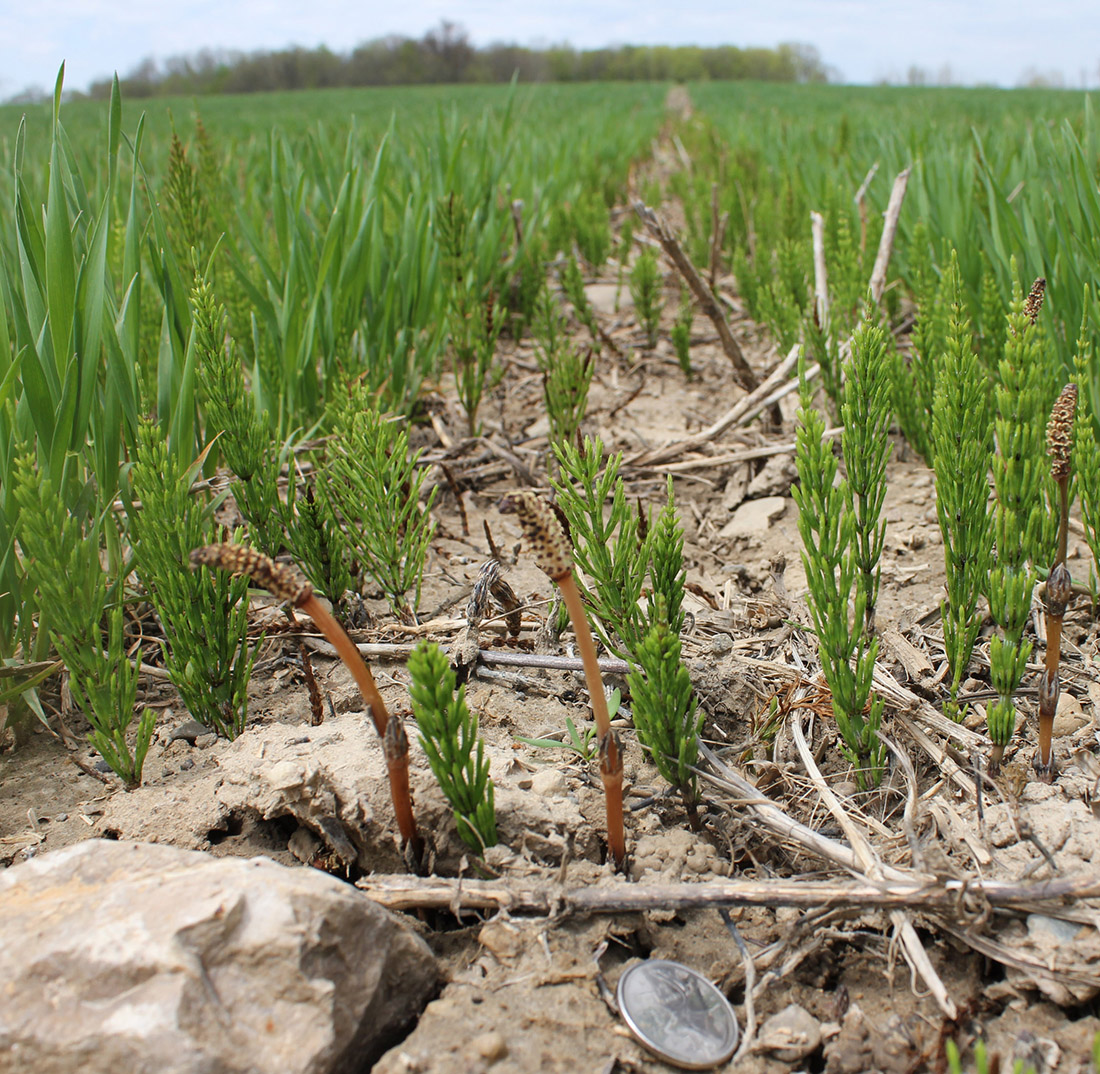
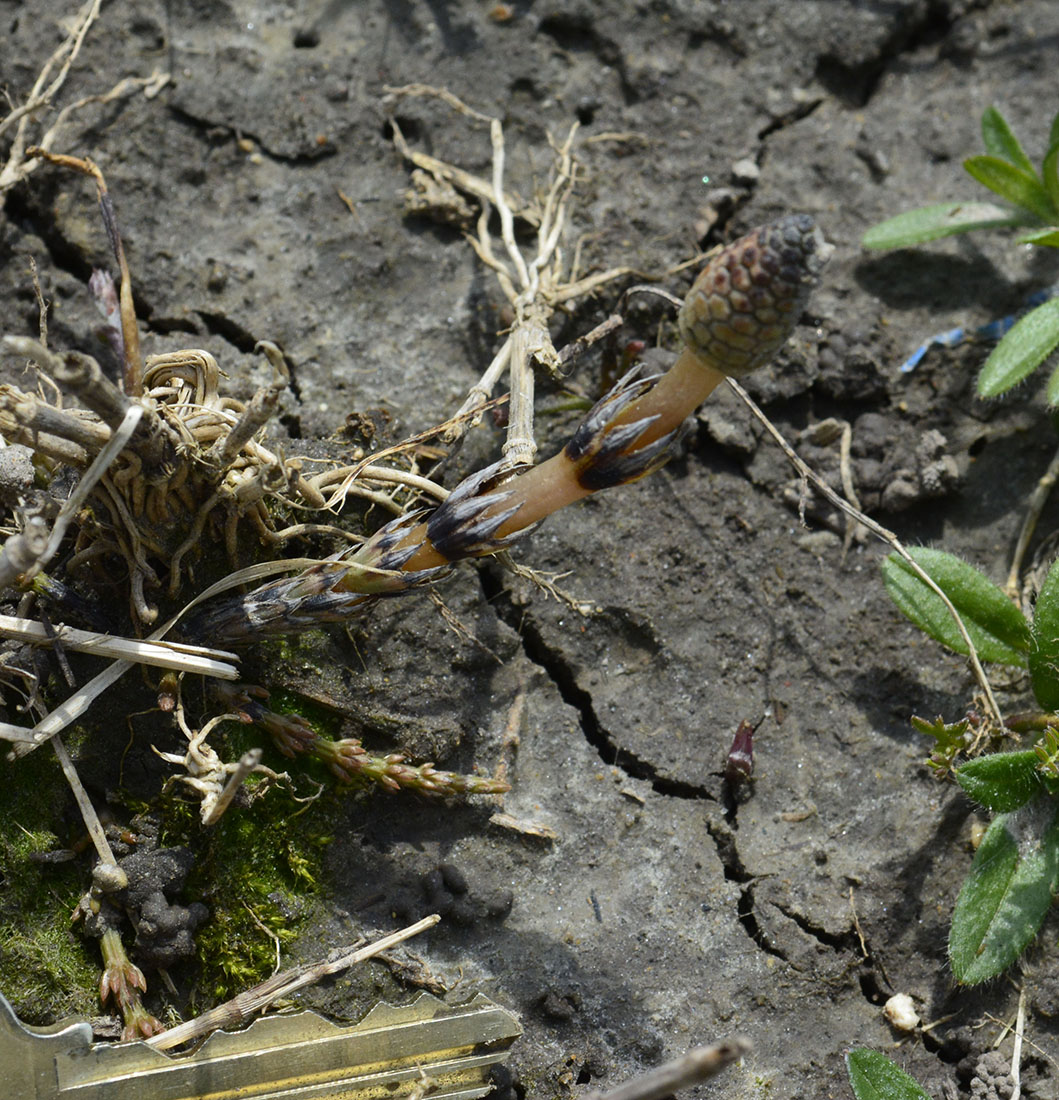
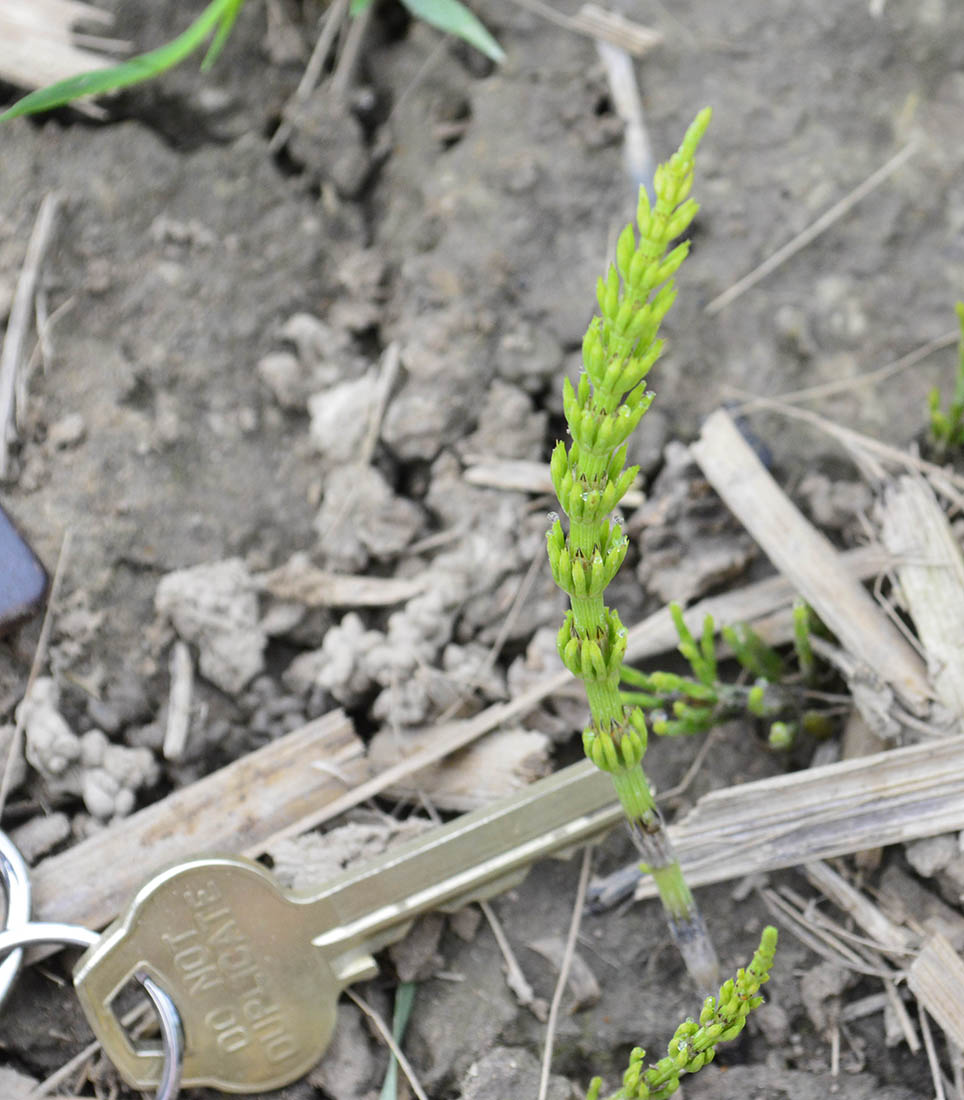
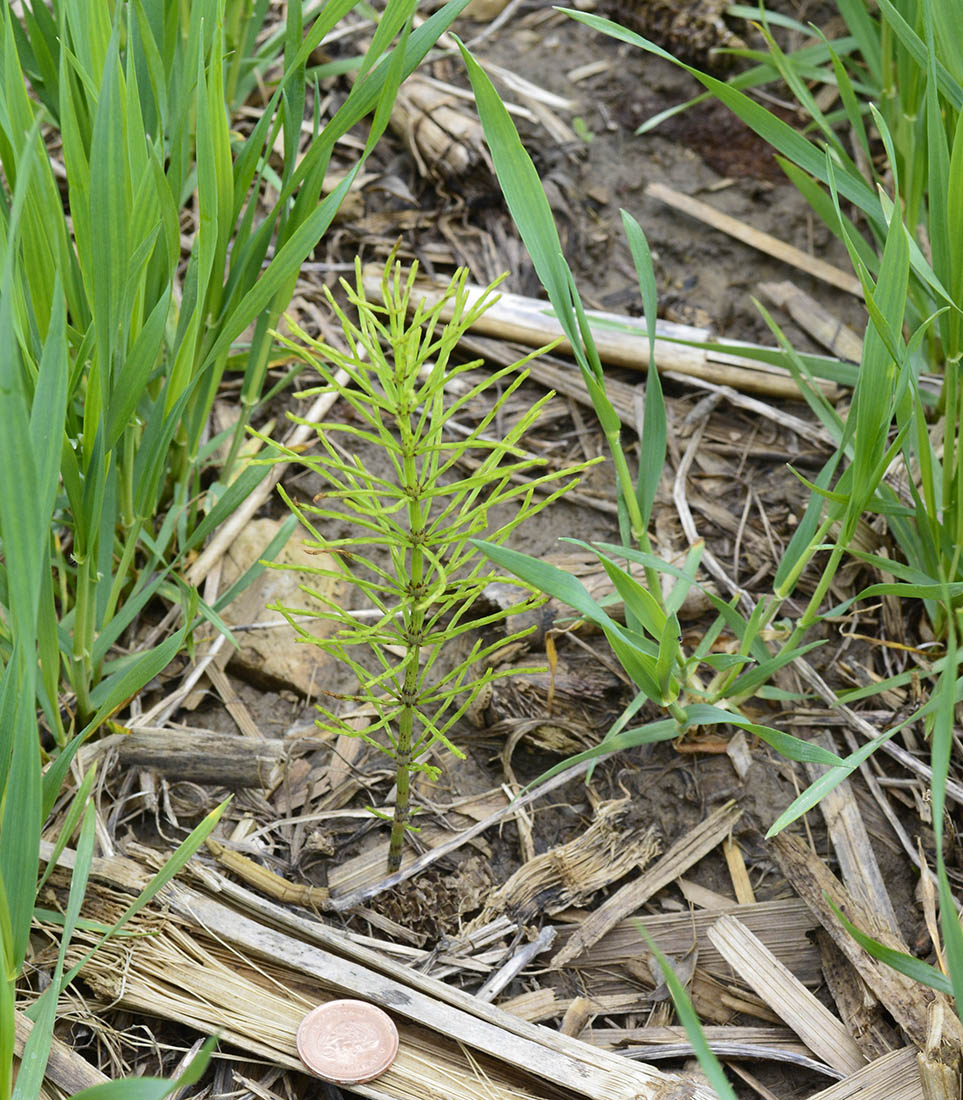
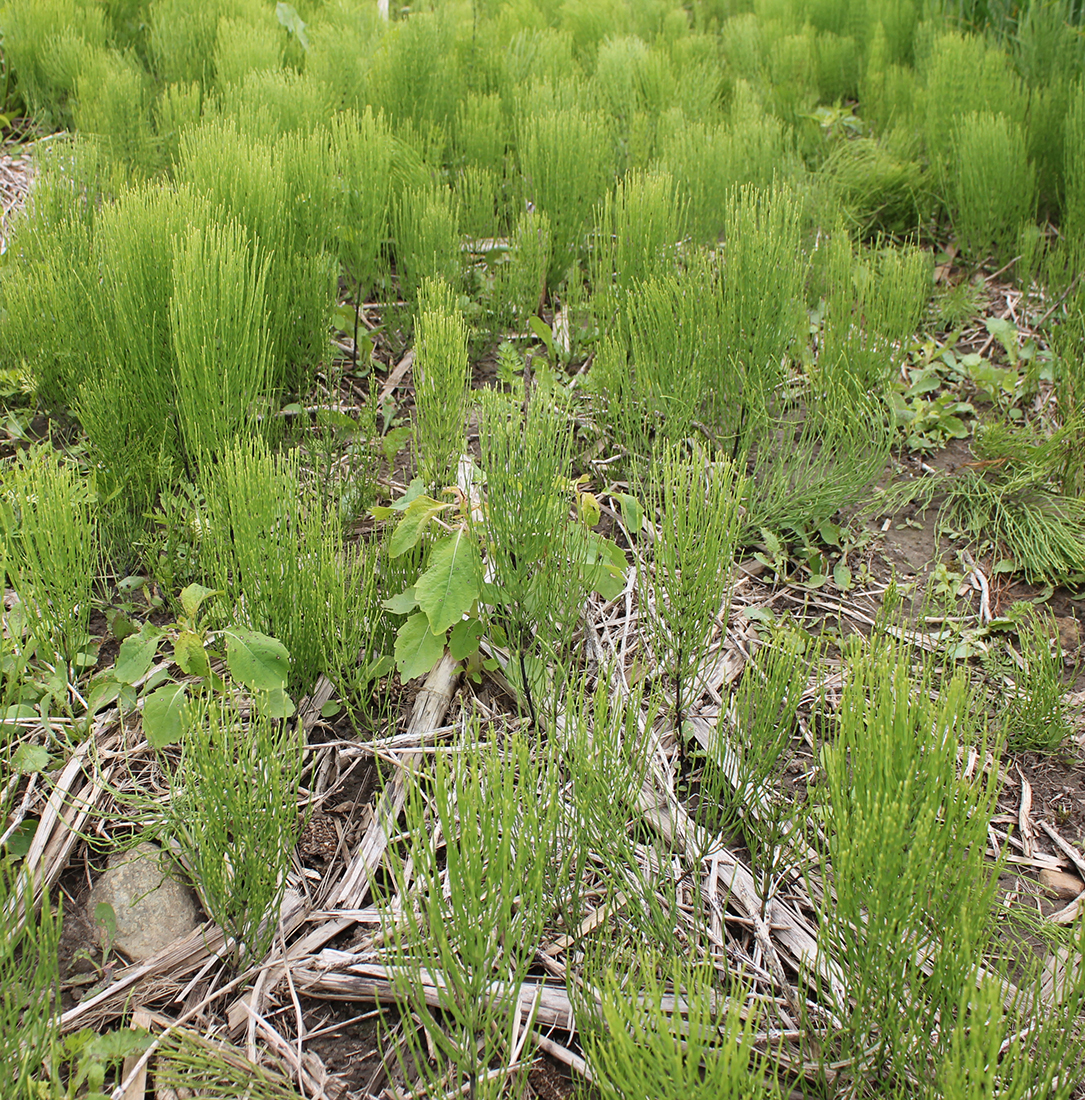
Updated: January 13, 2023
Published: January 13, 2023